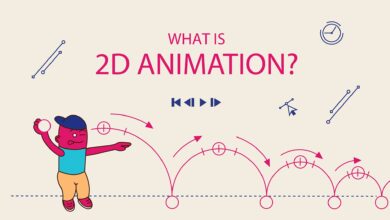Fiber Laser vs MOPA Laser: What’s the Difference?

If you’re considering buying a fiber laser, it can be difficult to figure out whether or not you should opt for the MOPA configuration. In order to help you decide which type of laser will be best suited to your needs, this blog post will go over what each one offers and how they work, as well as weigh their advantages and disadvantages side by side. After reading this article, you’ll know what the differences are between these two types of lasers and be able to make an informed decision about which one might be better suited to your specific goals.
3D engraving with fiber laser technology
Lasit fiber lasers are the best machines on the market for 3D engraving. They are faster, more precise, and have a longer lifespan than any other type of laser. Plus, they are easier to use and require less maintenance. If you’re looking for a machine that can handle all your engraving needs, a lasit.it fiber laser is a way to go. You’ll get high-quality results without wasting time or money. That’s why fiber lasers are perfect for 3D engraving. Read our blog post about the differences between fiber and MOPA lasers if you want to learn more!
Compared to single-mode devices, multi-mode devices generate light in multiple wavelengths. This allows them to produce patterns with different depths—great for engraving intricate designs in solid materials such as metal, plastic, and glass. Multi-mode devices also boast higher output power compared to most single-mode models; however, since these lasers emit light across many different wavelengths, their beam cannot be focused as tightly as a single-mode device can.
Fiber lasers
Lasit fiber lasers are able to produce high-quality, permanent marks on a variety of materials. The main difference between a fiber laser and a MOPA laser is the type of amplifier used. Fiber lasers use a doped fiber as the active medium, while MOPA lasers use an undoped gain fiber. This means that fiber lasers can be more easily tuned to produce higher-quality marks. Another advantage of fiber lasers is that they don’t require optics like MOPA lasers do, which reduces the total cost. However, fiber lasers typically have longer cooling times than MOPA lasers. In addition, there is some evidence that light quality may degrade over time in some fibers. That said, fiber lasers tend to be less expensive than MOPA lasers. For most applications, either type will work well. It’s important to consider what your needs are before making a decision about which one you want to buy. For example, if you need something for large surfaces or long distances, you might want to go with a MOPA laser because of its speed and power capabilities. If you’re just doing smaller jobs or working near home then fiber lasers might be better because they’re cheaper and easier to maintain.
Main differences between fiber and MOPA lasers
Lasers are categorized by the type of lasing medium they use. The two main types of lasers are gas lasers and solid-state lasers. Gas lasers use gas as their lasing medium, while solid-state lasers use a solid gain medium. Fiber lasers and MOPA lasers are both types of solid-state lasers. A fiber laser uses optical fibers to create a coherent beam of light; a MOPA laser uses mirrors in the cavity to amplify its output.
A fiber laser is made up of an optical fiber with one or more end faces that emit light into the cavity. A MOPA laser is made up of an optical system that has at least one mirror or another reflective surface in its cavity that creates feedback between itself and the gain medium, amplifying its output power. Fiber lasers have higher peak power than MOPA lasers because there is less amplification going on; this means that when creating larger pulses for cutting applications, it’s easier to maintain short pulse durations with fiber than with conventional CO2 lasers (which rely on high-frequency repetition rates).
Fiber optics
An optical fiber is a flexible, transparent fiber made by drawing glass or plastic to a diameter slightly thicker than that of human hair. Optical fibers are used most often as telephone wires and internet cables. They can also be used to transmit light from one place to another for various purposes including medical procedures, monitoring systems, and data communications. One of the best features of optical fiber is its flexibility. The material they’re made out of (glass or plastic) allows them to bend without breaking when pulled. As a result, they don’t need any kind of protection during installation, making them ideal for long-distance applications like running through underground pipes and tunnels where other cable types would get damaged more easily. Fiber optic cables have a tendency to lose very little signal strength over a distance which makes them popular in long-distance communication links. The basic advantage of copper wire is its ability to handle higher bandwidths with less signal loss. Another reason why these cables are so useful is that you can bundle them together to create larger-capacity transmission lines. A major disadvantage is the delicate nature of these cables. Without any protection, they will break when exposed to sharp bends or pressure and are difficult to repair if broken due to how tight they must be bundled together in order to fit inside protective jackets. There’s also a much greater investment required upfront when installing these cables compared with copper ones, but this cost should be recovered over time due to lower maintenance costs such as replacing damaged sections that happen all too frequently with traditional wiring methods.
.



